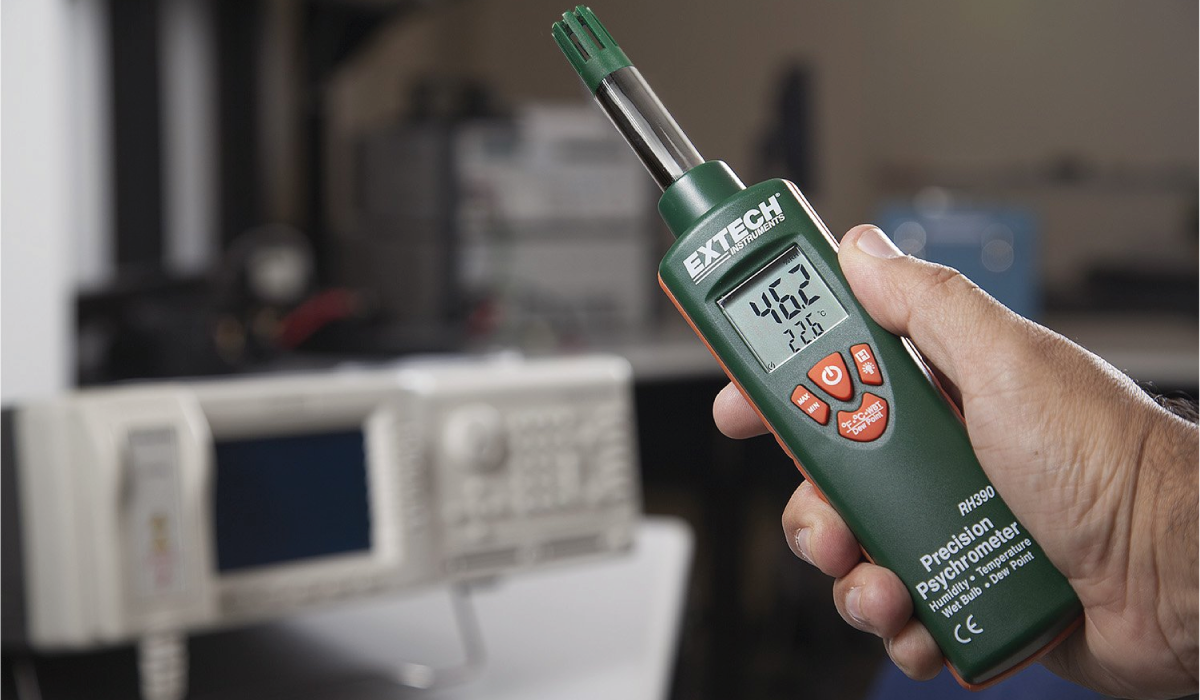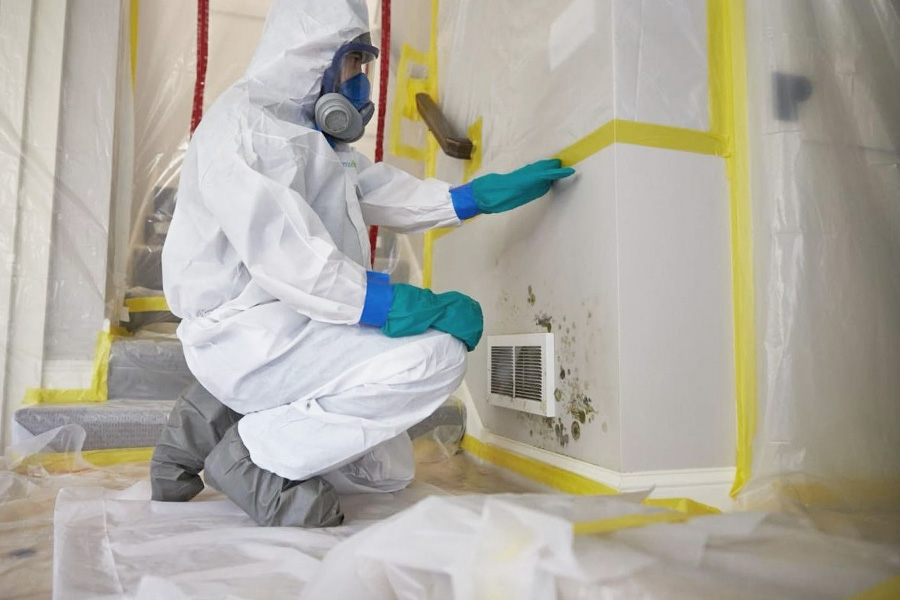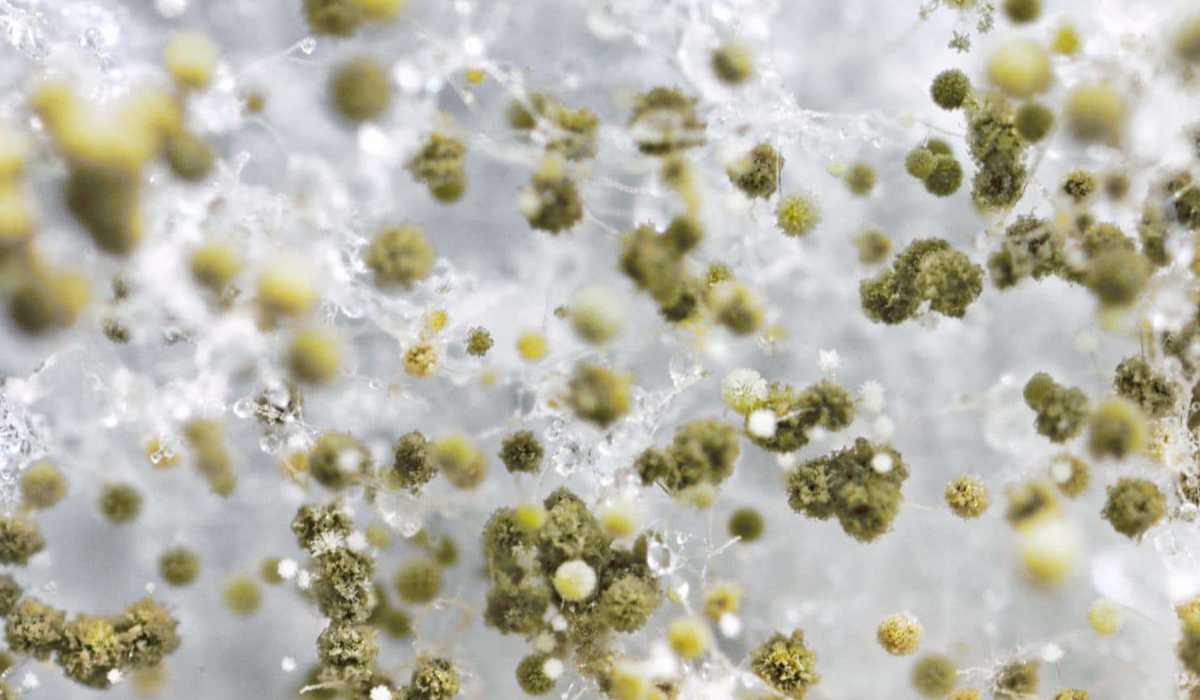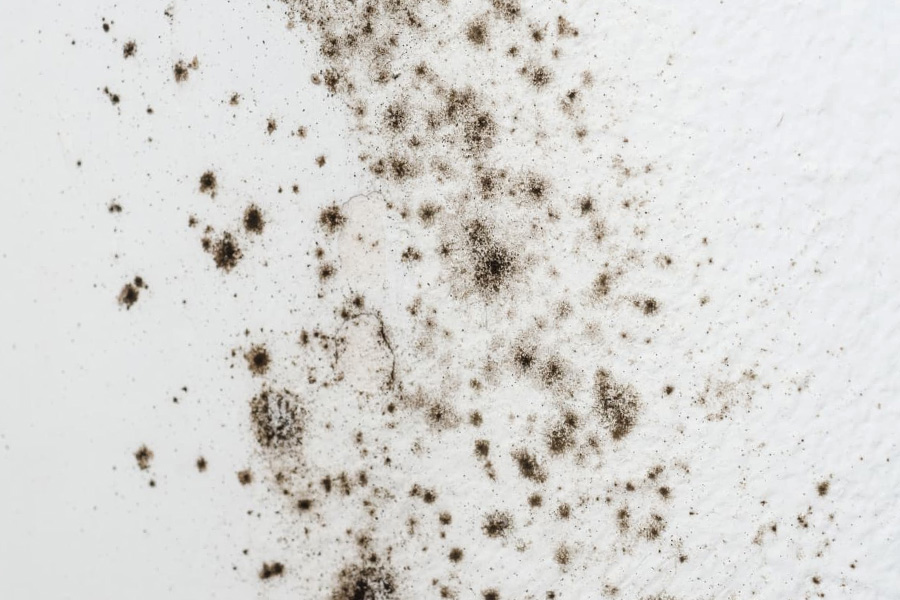
Mold Detectors: Essential Tools for Indoor Air Quality Monitoring
Introduction:
Welcome to our comprehensive guide on the importance of mold detectors in ensuring a healthy environment. In this article, we will explore the significance of mold detection and how it plays a crucial role in maintaining indoor air quality. Mold growth can have detrimental effects on both the structural integrity of buildings and the health of occupants. By using reliable mold detectors, you can identify mold infestations early on, enabling prompt remediation and prevention of potential health issues.
Mold detection is a proactive approach to safeguarding your home or workplace. By being aware of the presence of mold, you can take necessary measures to mitigate its effects and create a healthier living environment. Throughout this guide, we will discuss different types of mold detectors, their usage, maintenance, and steps to detect and address mold infestation.
Whether you are a homeowner, property manager, or concerned individual, understanding the risks associated with mold infestation and the tools available for detection is vital. Let’s delve into the world of mold detectors and learn how they can contribute to a safer and healthier indoor environment for you and your loved ones.
Continue reading to discover the various aspects of mold detection and how it can empower you to take control of your living environment.
I. What is Mold Detection?
Mold detection is the process of identifying the presence of mold in indoor spaces. Mold can grow in various areas, including walls, ceilings, floors, and hidden spaces, often thriving in environments with high humidity and moisture. Detecting mold early is crucial to prevent its further spread and mitigate potential health risks.
Mold detectors are specialized tools designed to identify and measure the presence of mold spores or the conditions favorable for mold growth. These detectors employ different methods, such as air sampling, surface testing, or moisture detection, to assess the presence and severity of mold infestation.
By utilizing mold detectors, you can proactively identify areas where mold is present or likely to grow. This early detection allows you to take appropriate measures to address the issue promptly, preventing further damage to the property and minimizing potential health concerns for occupants.
In the next sections, we will explore the various types of mold detectors available and discuss their features, advantages, and limitations. Understanding the different options will empower you to choose the right mold detector for your specific needs and ensure a comprehensive approach to mold detection in your living or working space.
II. Understanding the Risks of Mold Infestation
Mold infestation poses significant risks to both the structural integrity of buildings and the health of individuals residing or working within them. It is crucial to understand the potential consequences of mold growth to prioritize its detection and remediation. In this section, we will delve into the risks associated with mold infestation.
1. Health Risks:
Exposure to mold can lead to a range of health issues, especially for individuals with respiratory conditions or compromised immune systems. Mold spores can trigger allergies, cause respiratory symptoms such as coughing and wheezing, and even contribute to the development of asthma in susceptible individuals. Prolonged exposure to certain types of mold, such as black mold (Stachybotrys chartarum), may result in more severe health problems.
2. Structural Damage:
Mold growth can cause significant damage to buildings over time. It can weaken structures, compromise the integrity of walls, ceilings, and floors, and lead to decay. This can be particularly concerning in areas with hidden mold, where the damage may go unnoticed until it becomes extensive and costly to repair.
3. Reduced Indoor Air Quality:
Mold releases spores and volatile organic compounds (VOCs) into the air, which can lead to poor indoor air quality. This can result in unpleasant odors, respiratory irritation, and an overall uncomfortable living or working environment. Mold detection helps to identify and address the source of mold contamination, improving indoor air quality and creating a healthier space.
By understanding the risks associated with mold infestation, you can appreciate the importance of early detection. Timely identification of mold growth allows for effective remediation measures, minimizing health risks, preventing structural damage, and maintaining a safe and comfortable living or working environment.
In the following sections, we will explore different types of mold detectors available in the market, empowering you to choose the most suitable option for your specific needs.
III. Types of Mold Detectors
When it comes to mold detection, various types of detectors are available, each offering unique features and capabilities. Understanding the different options will help you make an informed decision regarding the most suitable mold detector for your specific requirements. Let’s explore some of the common types of mold detectors:
1. Air Sampling Detectors:
Air sampling detectors collect air samples and analyze them for the presence of mold spores. These detectors use specialized cassettes or filters to capture airborne particles, which are then sent to a laboratory for analysis. This method provides valuable information about the types and concentrations of mold spores present in the air.
2. Surface Testing Detectors:
Surface testing detectors involve taking samples from visible mold growth or suspected areas of mold contamination. These detectors can include swab kits, tape lifts, or bulk sampling methods. The collected samples are then examined under a microscope or sent to a laboratory for analysis to determine the type and extent of mold present.
3. Moisture Detectors:
Moisture detectors are essential for identifying areas with high humidity or moisture levels, which are favorable conditions for mold growth. These detectors measure moisture content in various materials, such as walls, ceilings, or floors. By identifying and addressing moisture sources, you can prevent mold growth before it becomes a widespread issue.
4. Thermal Imaging Detectors:
Thermal imaging detectors use infrared technology to detect temperature variations, which can indicate areas of potential moisture or hidden mold growth. By identifying temperature anomalies, these detectors help pinpoint areas that require further investigation and potential mold testing.
5. Data Logging Detectors:
Data logging detectors continuously monitor temperature, humidity, and other environmental conditions over a specified period. These detectors provide valuable data to identify patterns or fluctuations that may contribute to mold growth. By monitoring conditions, you can take proactive measures to maintain optimal indoor environments and prevent mold infestations.
It’s essential to consider your specific needs, budget, and the level of accuracy required when selecting a mold detector. Consulting with professionals or mold remediation experts can provide valuable guidance in choosing the most suitable type of detector for your situation.
In the next section, we will discuss the proper usage and maintenance of mold detectors, ensuring accurate and reliable results for effective mold detection and prevention.
IV. Proper Usage and Maintenance of Mold Detectors
To ensure accurate and reliable results when using mold detectors, it is crucial to understand their proper usage and maintenance. By following guidelines and best practices, you can maximize the effectiveness of the detectors and obtain accurate information about mold presence. Here are some key considerations:
1. Read the Instructions:
Before using any mold detector, thoroughly read and understand the manufacturer’s instructions. Familiarize yourself with the detector’s features, recommended usage techniques, and any specific precautions or limitations.
2. Calibrate the Detector:
For certain types of mold detectors, calibration may be necessary to ensure accurate readings. Follow the calibration instructions provided by the manufacturer to calibrate the detector periodically or as recommended.
3. Use in Relevant Areas:
Identify the areas where mold growth is suspected or likely to occur, such as damp basements, bathrooms, or areas with previous water damage. Focus on the use of the detector in these specific areas to maximize its effectiveness.
4. Follow Sampling Guidelines:
If using air sampling or surface testing detectors, carefully follow the recommended sampling guidelines. Take samples from representative areas, ensuring proper collection techniques to avoid cross-contamination.
5. Monitor Environmental Conditions:
When using data logging detectors or thermal imaging detectors, monitor and record environmental conditions regularly. Pay attention to temperature, humidity, and moisture levels to identify potential areas of concern.
6. Interpret Results Properly:
Understand how to interpret the results provided by the mold detector. Different detectors may provide varying levels of detail, ranging from basic indications to laboratory analysis reports. Seek professional assistance if you require assistance in interpreting the results accurately.
7. Regular Maintenance:
Maintain your mold detectors in good working condition by following recommended maintenance practices. Clean the detectors regularly, replace batteries when necessary, and store them properly when not in use.
By using mold detectors correctly and maintaining them appropriately, you can rely on accurate readings and make informed decisions regarding mold detection and prevention. In the following sections, we will guide you through the steps to detect and address mold infestation effectively, empowering you to create a healthier living or working environment.
V. Steps to Detect and Address Mold Infestation
Detecting and addressing mold infestation promptly is crucial to prevent further damage and ensure a healthy indoor environment. By following these steps, you can effectively identify and address mold-related issues:
1. Visual Inspection:
Conduct a thorough visual inspection of your property, paying close attention to areas prone to moisture, such as bathrooms, kitchens, basements, and areas with previous water damage. Look for visible signs of mold growth, including discoloration, musty odors, or water stains.
2. Use Mold Detectors:
Utilize the appropriate mold detectors discussed earlier to gather additional information and confirm the presence of mold. Depending on the type of detector, conduct air sampling, surface testing, or moisture measurements in areas of concern.
3. Identify the Source:
Once mold is detected, it is essential to identify the source of moisture that is promoting mold growth. This could be due to leaks, high humidity, condensation, or inadequate ventilation. Addressing the moisture source is crucial to prevent recurring mold problems.
4. Consult Professionals:
For extensive mold infestations or if you are uncertain about the extent of the problem, it is advisable to consult professionals, such as mold remediation experts or indoor environmental specialists. They can conduct more comprehensive assessments, provide accurate diagnosis, and offer appropriate remediation recommendations.
5. Develop a Remediation Plan:
Based on the severity and extent of the mold infestation, develop a detailed remediation plan. This plan should include the necessary steps for mold removal, addressing moisture issues, and preventing future mold growth. Follow industry guidelines and best practices for safe and effective mold remediation.
6. Proper Cleanup and Remediation:
Execute the remediation plan, ensuring proper containment of the affected areas to prevent the spread of mold spores. Clean and remove mold-infested materials following recommended procedures, such as using appropriate personal protective equipment and effective cleaning solutions.
7. Address Moisture Issues:
Fix any underlying moisture issues to prevent future mold growth. This may involve repairing leaks, improving ventilation, reducing humidity levels, or implementing moisture control measures. Ensure that the affected areas are thoroughly dried before reconstruction or reoccupying the space.
8. Monitor and Prevent:
Regularly monitor the environment for any signs of recurring mold growth. Implement preventive measures, such as maintaining proper ventilation, promptly addressing leaks or water damage, and practicing good indoor hygiene habits to minimize the risk of mold infestation.
By following these steps and taking proactive measures, you can effectively detect and address mold infestation, creating a healthier and mold-free indoor environment for yourself and others.
In the next section, we will provide valuable tips for mold prevention, helping you minimize the likelihood of mold growth in the future.
VI. Mold Prevention Tips
Preventing mold growth is key to maintaining a healthy and mold-free environment. By implementing these practical tips, you can minimize the likelihood of mold infestation:
1. Control Moisture Levels:
Keep indoor humidity levels below 50% to discourage mold growth. Use dehumidifiers in areas prone to high humidity, such as basements and bathrooms. Fix any leaks promptly, ensure proper ventilation, and use exhaust fans when cooking or showering.
2. Proper Ventilation:
Ensure adequate ventilation throughout your property. Use fans or open windows to improve air circulation and reduce moisture buildup. Pay special attention to areas with limited airflow, such as attics, crawl spaces, and closets.
3. Address Water Intrusion:
Promptly address any water intrusion, such as roof leaks, plumbing issues, or foundation cracks. Thoroughly dry affected areas within 24 to 48 hours to prevent mold growth. Consider professional assistance for large-scale water damage restoration.
4. Use Mold-Resistant Materials:
When renovating or constructing, opt for mold-resistant building materials, such as mold-resistant drywall or paint. These materials contain additives that inhibit mold growth, reducing the risk of infestation.
5. Regular Cleaning:
Maintain cleanliness in your living or working space. Regularly clean and dry areas prone to moisture, such as bathrooms and kitchens. Use mold-inhibiting cleaners and disinfectants to discourage mold growth on surfaces.
6. Monitor Indoor Plants:
Monitor indoor plants for excessive moisture around the pots or signs of mold growth in the soil. Avoid overwatering and ensure proper drainage to prevent mold-friendly conditions.
7. Keep Air Ducts Clean:
Regularly inspect and clean your HVAC system’s air ducts to prevent the circulation of mold spores. Hire professionals to perform routine maintenance and cleanings to ensure optimal air quality.
8. Monitor Basements and Crawl Spaces:
Regularly check basements and crawl spaces for signs of moisture or water intrusion. Ensure proper insulation, ventilation, and sealing to minimize moisture buildup in these areas.
9. Maintain Gutters and Downspouts:
Clean and maintain gutters and downspouts to ensure proper water drainage away from the property’s foundation. This helps prevent water accumulation and potential mold issues.
10. Educate Occupants:
Educate occupants of your property about the importance of mold prevention. Encourage proper ventilation practices, prompt reporting of leaks or moisture issues, and general awareness of mold-friendly conditions.
By implementing these preventive measures, you can significantly reduce the risk of mold growth and maintain a healthier living or working environment.
In the next section, we will summarize the key points covered in this guide and emphasize the importance of mold detection and prevention.
VII. Summary and Conclusion
In this comprehensive guide, we have explored the importance of mold detection, remediation, and prevention. Mold infestation can pose risks to both the structural integrity of buildings and the health of individuals. By following the steps outlined in this guide, you can effectively detect, address, and prevent mold growth, ensuring a healthier living or working environment.
We began by understanding the risks associated with mold infestation, including health issues and structural damage. Recognizing these risks emphasizes the importance of early detection and remediation. We then discussed various types of mold detectors, such as air sampling detectors, surface testing detectors, moisture detectors, thermal imaging detectors, and data logging detectors. Each type serves a specific purpose in identifying and assessing mold presence.
Proper usage and maintenance of mold detectors were emphasized to ensure accurate and reliable results. Following guidelines, interpreting results correctly, and seeking professional assistance when needed contribute to effective mold detection and prevention efforts.
We then delved into the steps involved in detecting and addressing mold infestation. Conducting visual inspections, using mold detectors, identifying moisture sources, consulting professionals, and developing remediation plans are essential in successfully addressing mold issues. Proper cleanup, addressing moisture problems, and monitoring help prevent recurring mold growth.
Lastly, we provided valuable tips for mold prevention, including controlling moisture levels, maintaining proper ventilation, addressing water intrusion promptly, using mold-resistant materials, regular cleaning, and monitoring potential problem areas.
By implementing these strategies and fostering awareness about mold prevention, you can create a healthier and mold-free environment for yourself and others.
Remember, mold detection and prevention are ongoing processes. Regular monitoring, maintenance, and prompt action are key to effectively combating mold infestation. Stay vigilant, follow best practices, and seek professional assistance when needed to ensure a mold-free environment.




